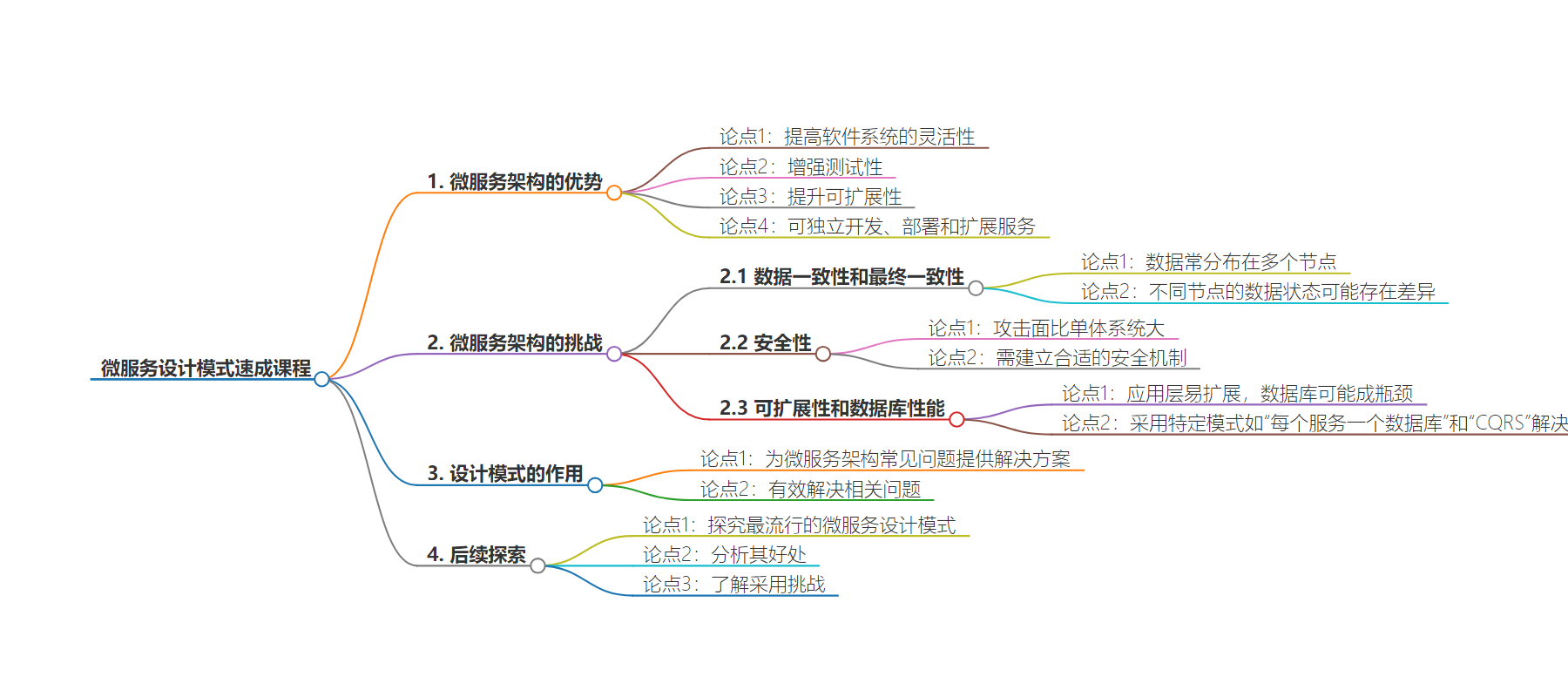包阅导读总结
1. 关键词:Microservices、Design Patterns、Architecture、Challenges、Solutions
2. 总结:
本文介绍了微服务架构因能提升软件系统灵活性等而受欢迎,但其实施面临数据一致性等挑战,设计模式可提供解决方案,文中将探讨流行的微服务设计模式及利弊、采用挑战。
3. 主要内容:
– 微服务架构
– 受欢迎原因:提升灵活性、可测试性和可扩展性,能独立开发、部署和扩展服务。
– 面临的挑战
– 数据一致性和最终一致性:数据分布在多节点,存在状态差异。
– 安全:攻击面大,需建立合适安全机制,如 API 网关模式。
– 可扩展性和数据库性能:应用层易扩展,数据库易成瓶颈,可采用特定模式解决。
– 设计模式
– 作用:提供常见问题的解决方案。
– 后续内容:将探讨流行微服务设计模式及相关情况。
思维导图:
文章地址:https://blog.bytebytego.com/p/a-crash-course-on-microservices-design
文章来源:blog.bytebytego.com
作者:ByteByteGo
发布时间:2024/8/8 15:30
语言:英文
总字数:234字
预计阅读时间:1分钟
评分:81分
标签:微服务,设计模式,软件架构,可扩展性,数据一致性
以下为原文内容
本内容来源于用户推荐转载,旨在分享知识与观点,如有侵权请联系删除 联系邮箱 media@ilingban.com
Microservices architecture has gained popularity for its ability to improve the flexibility, testability, and scalability of software systems.
By breaking down a monolithic application into smaller, independently deployable services, microservices enable teams to develop, deploy, and scale each service independently.
However, the implementation of microservices architecture comes with its own set of challenges such as:
-
Data Consistency and Eventual Consistency: In a microservices architecture, data is often distributed across multiple nodes, which can be located in different data centers or even different geographic regions. At any given point in time, there can be discrepancies in the state of data between various nodes. This phenomenon is known as eventual consistency.
-
Security: Microservices architecture introduces a larger attack surface for malicious actors compared to monolithic systems. It’s crucial to establish appropriate security mechanisms while building microservices. Design patterns such as the API Gateway pattern can help.
-
Scalability and Database Performance: Microservices are known for their scalability. However, while it is relatively easy to scale the application layer by adding more instances, databases can become performance bottlenecks if not designed for scalability. Patterns such as Database per Service and CQRS help solve this challenge.
Design patterns provide proven solutions to common problems encountered in a microservices architecture. By applying an appropriate design pattern, these problems can be effectively addressed.
In this post, we’ll explore the most popular microservices design patterns along with their benefits and adoption challenges.
